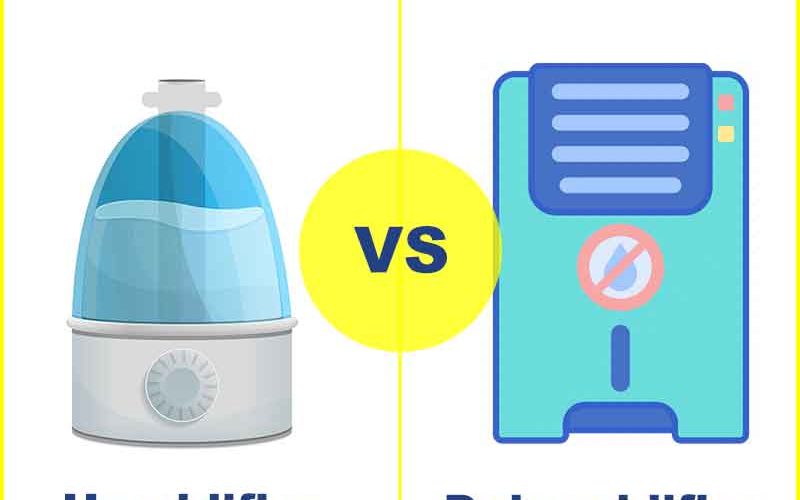Both humidifiers and dehumidifiers are designed to improve indoor humidity.
Humidifiers is designed to increase the moisture levels while the Dehumidifier reduces dampness.
In this articles you will not only learn the major differences between the two but also the different types of each that exists in the consumer marketplace.
Humidifier
Dehumidifier
Which One Do You Need?
Both humidifiers and dehumidifiers are utilized to keep the indoor humidity at optimal levels between 35%-50%.
Their difference lies in their functionality, as shown below:
Humidifier
Humidifiers uses water to transform then emit vapor or steam of water in to the atmosphere to increase moisture levels of the surrounding air, making the living space less dry and thus more comfortable for the home occupants. This appliance is particularly useful if you tend to develop sore throat and sinus congestion among other respiratory issues, as well as dry skin.
If, for instance, you have cold, humid air in your surrounding, it will go a long way in loosening excessive phlegm and clearing your chest and nasal passages. In essence, a humidifier will come in handy when looking to make the consequences of hot, dry weather more bearable.
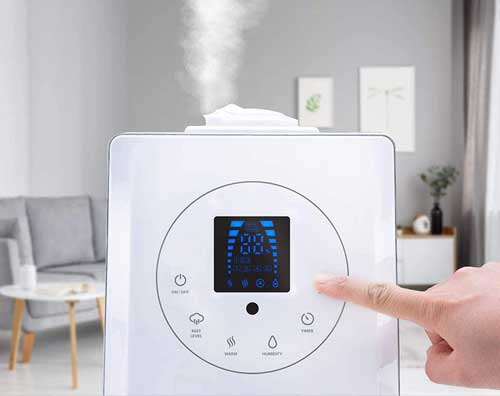
Dehumidifier
Dehumidifiers, on the other hand, are designed to extract moisture from the air and subsequently exhausting dryer, recycled air, overall lowering moisture levels of the surrounding air.
Excess humidity might trigger health issues like allergies and asthma. It also creates a conducive environment for the growth of mold and dust mites, as well as causing damage to wood furniture in your home. A dehumidifier works alongside your air conditioner to make your home cooler and dryer, which will ultimately lead to lower utility bills.
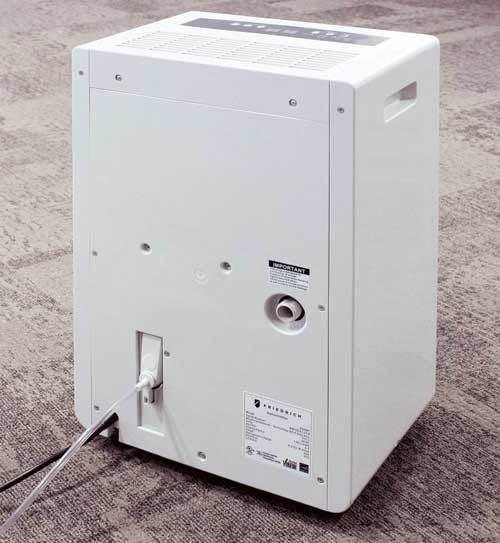
Determining Relative Humidity
In addition to keeping a tab on the telltale signs of humidity problems, the surest way of knowing your home’s RH levels involves using a hygrometer. A hygrometer, which looks pretty much like a thermometer, measures the amount of moisture in your indoor air.
Some humidifiers and dehumidifiers come with external or built-in hygrometers, which eliminate the need for measuring a room’s RH levels manually. Other models come with an integrated humidistat that determines and regulates the relative humidity in a room automatically.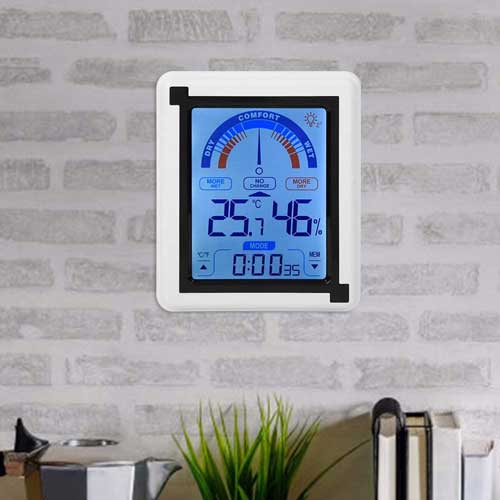
Seasonality Usage
Every season is different, moisture in the air changes and requirements to either increase or decrease changes based on location, needs. Conventionally, humidifiers are used during winter and dehumidifiers are used during summer seasons.
Read below to learn why.
Winter/Humidifier
During the cold winter months, it’s not unusual to find your indoor air getting too dry. Low humidity can potentially trigger health problems like headaches, dry skin, and allergy flair-ups. It may also cause your wooden furniture to dry out and crack.
You will, therefore, want to utilize a humidifier in a bid to reinstate moisture into your indoor environment and thus avoiding structural issues. It will also help with keeping your airways clear.
Summer/Dehumidifier
Conversely, dehumidifiers will come in handy during the hot and humid climate of the summer, especially in heavily insulated contemporary homes. A single-family can potentially generate up to 15 liters of humidity in a day through breathing, bathing, cooking and drying clothes.
During the warm summer months, the excess moisture will build up in your furnishings, wall linings and frames. Such dampness might destroy your furniture, curtains and appliances. It may also compromise the structural integrity of your home by causing damage to your window sills, wallpaper and wall linings.
This is not to mention triggering mold growth in wardrobes and carpets, which ultimately leads to a musty smell in your home.
Excess humidity might also take a toll on your health in the form of allergies and asthma. It also creates a conducive environment for the development of mold and dust mites, which could further fuel your health issues.
Humidifiers Types
Cool Mist Humidifiers
These feature a mist-dispersing nozzle coupled with a refillable reservoir. They operate by releasing a stream of cool vapor in your home within a certain radius.
Some cool mist humidifiers generate ultrasonic vibrations using a ceramic diaphragm while others soak up moisture through an absorbent wick. Either way, these devices work perfectly to disperse moisture in your indoor air.
Warm Mist Humidifiers
Just like their cool mist counterparts, these humidifiers are also equipped with a nozzle and water tank. They also come with a heating element that’s tasked with boiling the water inside the reservoir, converting it into steam before it gets released into the air.
Some warm-mist humidifiers are specially designed to disperse medicated moisture into your indoor atmosphere.
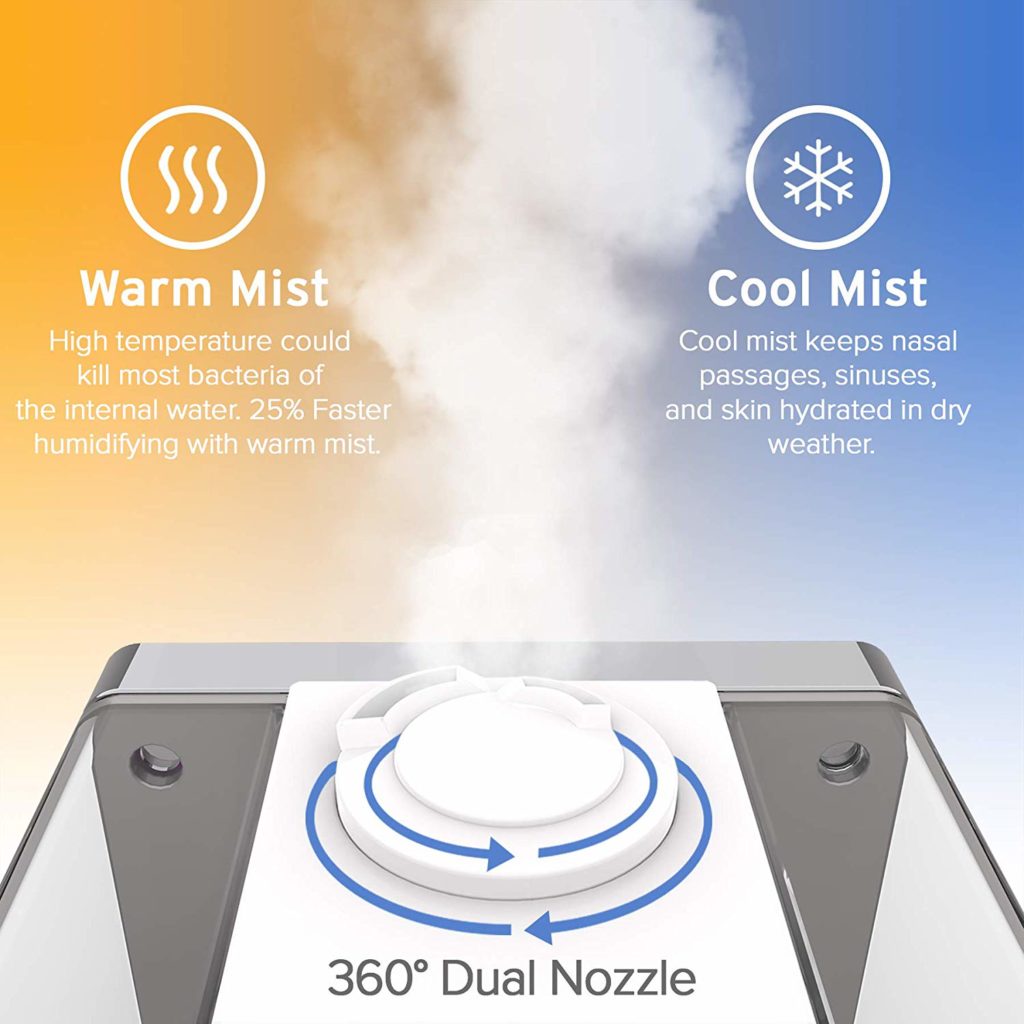
Dehumidifier Types
Mechanical/Refrigerative
This is the most popular type of dehumidifier among homes. It employs a small fan to extract moisture from your indoor air, which is subsequently passed over a refrigerated coil. This causes condensation to collect on the coils and consequently drip into a collecting tank.
These dehumidifiers work optimally at high temperatures of 65 degrees and an RH of 45% and above.
Electronic Dehumidifiers
These units utilize a Peltier heat pump to create a conducive environment for optimal moisture extraction. They typically operate quietly, but their efficiency is considerably low. Electronic dehumidifiers are, therefore, ideal for constricted spaces measuring up to 300 cubic feet.
Desiccant/Absorption
This dehumidifier operates by spinning an absorbent material known as a dessicant through the atmosphere to extract excess humidity from the atmosphere. One end of the system is simultaneously heated to draw moisture out of the material.
With this type of dehumidifier, you may extract moisture from highly humid areas that also experience low temperatures, which make them ideal for industrial application.
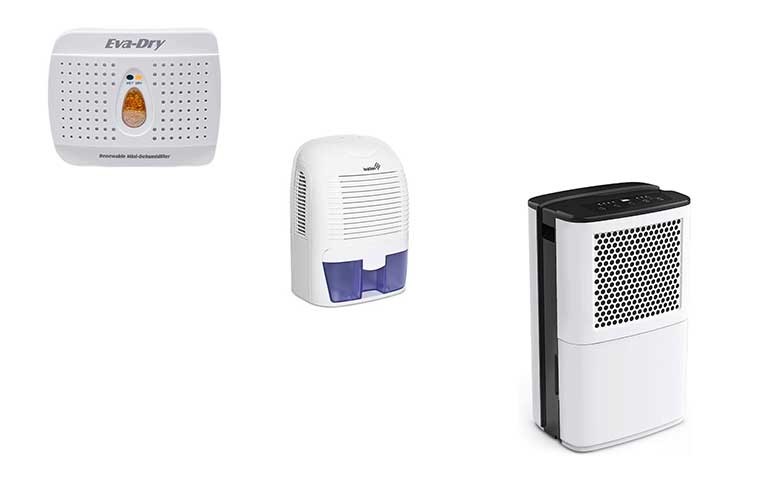
From Left: Desiccant, Electric, Mechanical Dehumidifiers
Bottom Line
The relative humidity in your home is the deciding factor on whether you require a humidifier or dehumidifier. Low humidity levels may trigger static electricity, dry hair, and flaky skin, while also increasing your susceptibility to colds and respiratory issues.
It may also make your wood fixtures, music instruments and antiques to split or crack. This is where a humidifier comes in handy; it supports skin health, provides sinus relief and helps to control seasonal allergies. A humidifier is a lifesaver for people suffering from allergies, asthma or chronic bronchitis. It also serves to protect your furniture and personal belongings from damage, which would be the natural consequence of dryness.
Conversely, high humidity creates an ideal breeding ground for mold and dust mites, both of which can potentially exacerbate allergies and asthma among other respiratory complications.
You will, therefore, want to use a dehumidifier if the humidity levels in your home exceed 50%. This device will make a significant difference in the comfort of the home’s occupants, which is especially true during the warm and sticky months of summer when humidity levels are naturally high.

